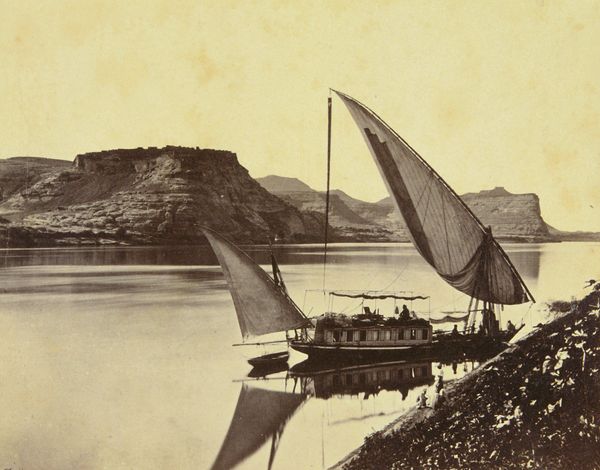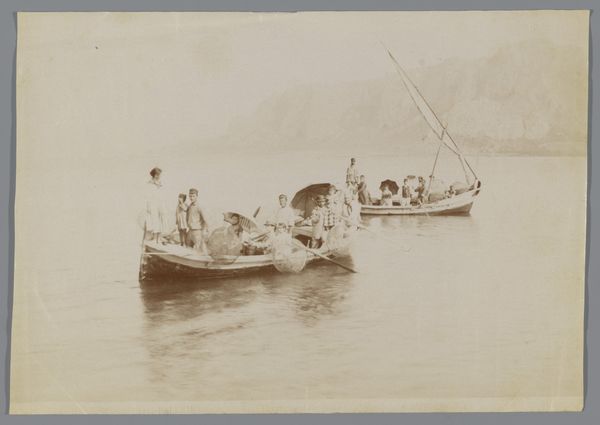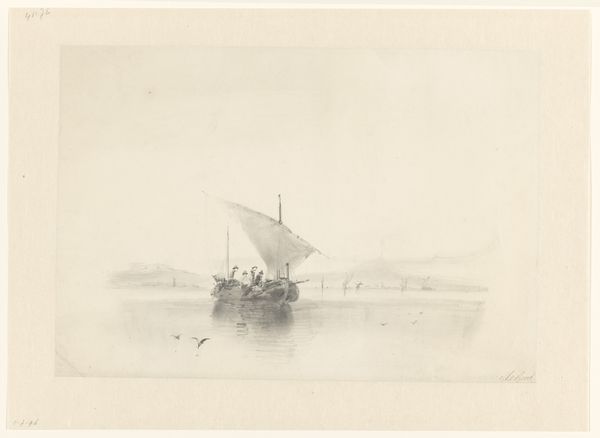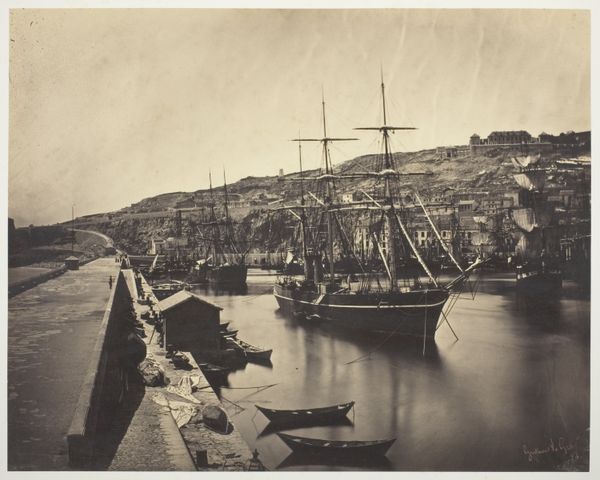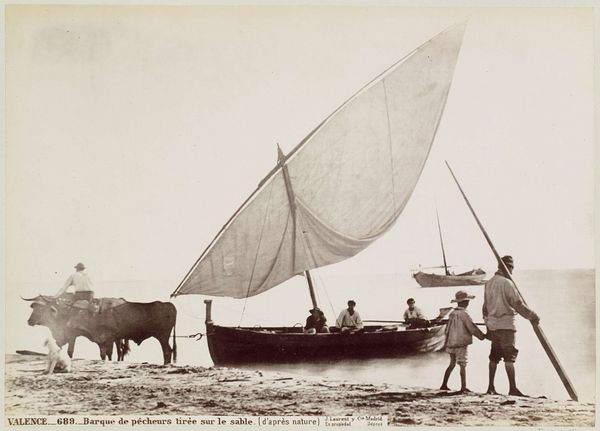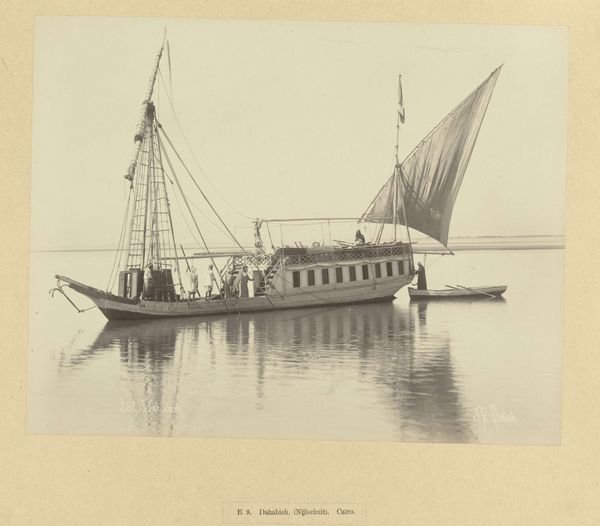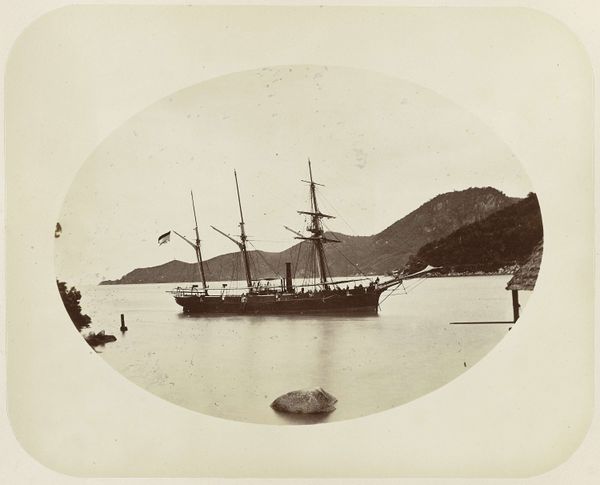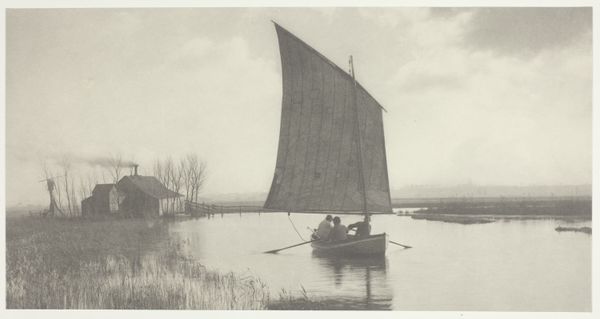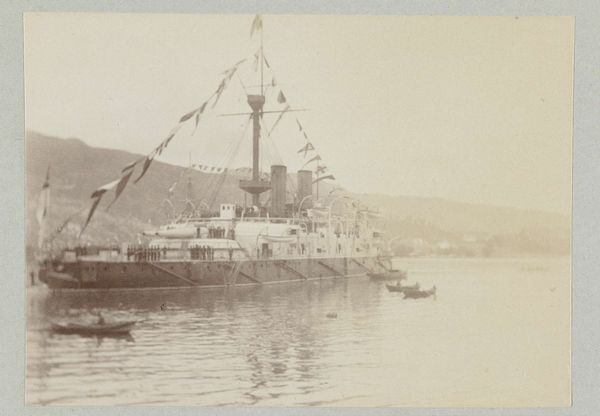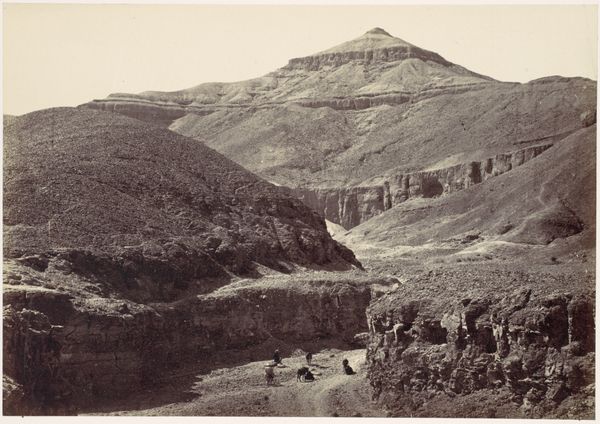
photography, albumen-print
#
landscape
#
photography
#
ancient-mediterranean
#
orientalism
#
albumen-print
Dimensions: height 150 mm, width 179 mm
Copyright: Rijks Museum: Open Domain
Curator: The atmosphere in this albumen print, "Veerpont bij Qasr Ibrim" by Francis Frith, dating from before 1862, is almost otherworldly, wouldn’t you agree? Editor: It's quite striking, a stillness pervades the image. The composition seems centered around the reflection on the water—the ripples disrupt the sharp mirrored quality. The tones feel muted, lending a certain softness. Curator: Indeed. Frith, renowned for his landscape photography and Orientalist leanings, has meticulously captured a specific locale here. The Qasr Ibrim fortress looms majestically in the background, its scale dwarfing the boat. Editor: Scale is precisely what interests me; the fort stands against the sky, the image divided in two like that seems symbolic. It's as if Frith wanted to communicate the grandeur and the perceived permanence of this ancient site compared to the temporary presence of those traveling along the Nile. Curator: You make an astute observation about Frith's intent. He, alongside other photographers of the period, played a crucial role in shaping Western perceptions of the Middle East, disseminating images laden with both documentary and romanticized viewpoints. What strikes you most about the composition? Editor: How Frith chose this seemingly odd angle—he must have been at water-level himself, yet angled off to the right bank as that catches the light, doesn’t it? And in framing the ferry juxtaposed with this relic of an ancient Nubian civilization, one cannot help but interpret it in terms of temporal contrast. Does the sharp reflection signify clarity, or does the subtle asymmetry hint at disruption, perhaps some sort of dissonance in our perception? Curator: An intriguing idea. While there's a tranquil veneer to the scene, it is compelling to contemplate that tension lurking beneath the surface, reflecting broader cultural encounters and imperial aspirations. Editor: Exactly. The quiet beauty holds something profound to say about history and interpretation. The print beckons to reflect not just upon what it shows, but the very act of its looking itself.
Comments
No comments
Be the first to comment and join the conversation on the ultimate creative platform.
